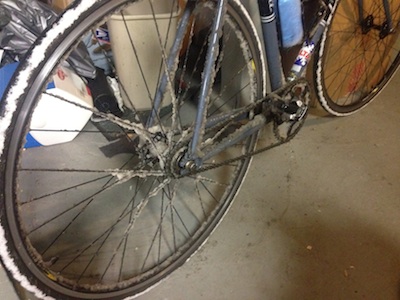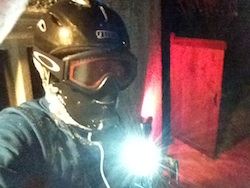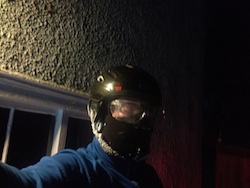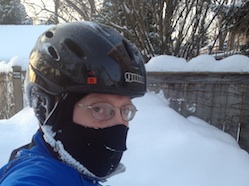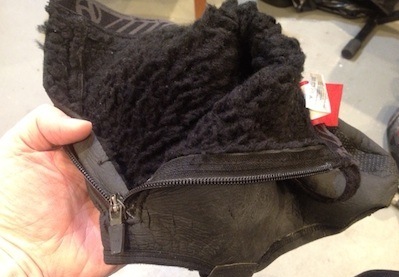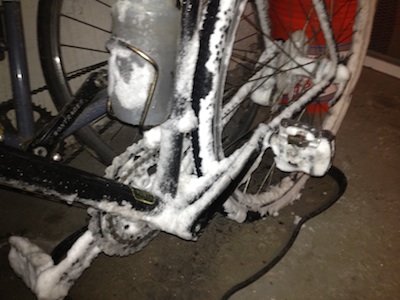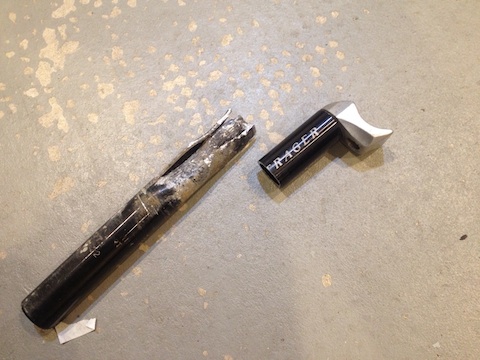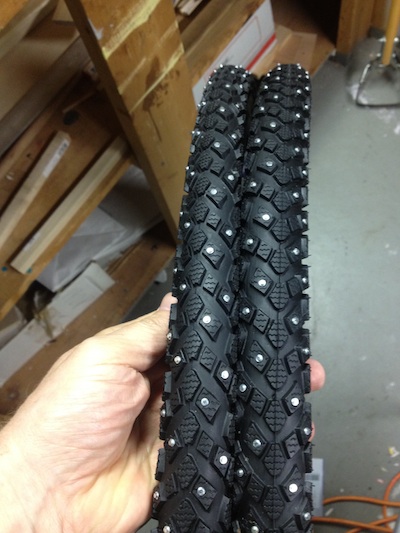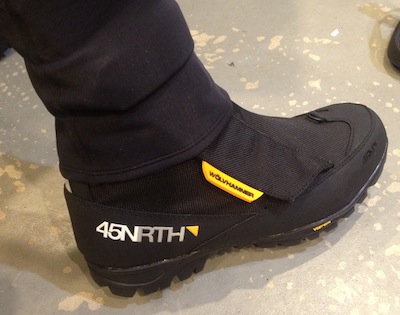The random musings of David Beazley, an independent Chicago-area software developer, teacher, and author.
On Early Morning Biking Through a Chicago Year
January 2, 2015
One of my lifelong passions has been getting outside on a bike and enjoying the scenery. Frankly, I feel that some of my best work has come about while thinking through problems on the bike. Alas, things get tough when you become a real adult and have responsibilities such as family and work. Finding time to ride consistently is a challenge. If you don’t make time for it, it just won’t happen.
To deal with this, I’ve reserved the early morning hours between about 4am-6:30am for riding. It’s a great time in that the rest of the family is sleeping, traffic is virtually non-existent, and it ensures that you get out first thing in the day. However, if you live in the midwest, you also know that this means being stuck inside for months on end as it is too dark, too cold, or too icy for any sane person to go outside. Sure, you can plunk yourself down on a bike trainer and binge watch every episode of The Wire while you spin away, but if your passion for biking is about going outside and seeing the world, you’ll eventually go insane. Admit it, riding an indoor trainer sucks.
It doesn’t have to be this way. You know when you were a kid and you had that Schwinn with the banana seat? When you saw some snow did you think "gee, I guess I’ll just stay inside and work on zone training?" Hell no, you probably went outside and made some snow jumps or went blasting down a hill in some powder before running off to go make a snowman. It was fun then and it’s still fun when you’re 45.

Although I’ve lived in the Chicago area about 16 years and biked through most of the summers, I’d never really given serious thought to doing it outdoor year round. I made a bit of an attempt in 2013, but got sick mid-January and ended up spinning inside for most of February and March. It was a dreadful fitness experience. Obviously, this situation had to be corrected for 2014. Yes, 2014 would be THE year for trying to bike outside every month of the year—and it was!
Many people don’t realize how great year-round early morning biking can be. So, in this post, I give some photo highlights from my year outside along with some practical tips on surviving the winter, summer thunderstorms, and other matters. In short, this is one of the most fun and personally satisfying things I’ve ever started doing. So, would I recommend it to others? Absolutely! Just don’t expect too many others to understand.
Prelude: January 6, 2014
First things first… a Chicago winter is a real winter. You need to prepare yourself physically and mentally. Did I go out riding in this? Yes, but for only about 4.5mi. It was insane and worse than anything I could have conceived. Actually, it was crazy fun in retrospect.
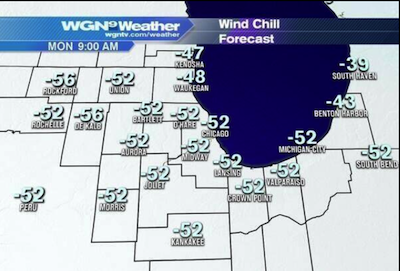
Rewind: October 24, 2013
How does one go about jumping into the middle of January bike riding? The real answer is that you ride all summer and you don’t stop. You ride through the fall as the conditions worsen. You’ll spend a lot of time out in the dark where everything looks like this:

This is when you need to experiment with clothing and gear. Figure out what works for you, but the most important thing is to not give in to the weather. I rode more than 100 days outside from September to December 2013. I had a pretty good idea where it was all going and by the time January rolled around, I was already accustomed to riding in the sub-freezing temperatures that had started back in November. I was ready.
January 21, 2014. Evanston. 5:21am
Fresh tracks! I had a lot of days like this as Chicago worked its way towards the third snowiest winter ever recorded. It was tremendous fun.
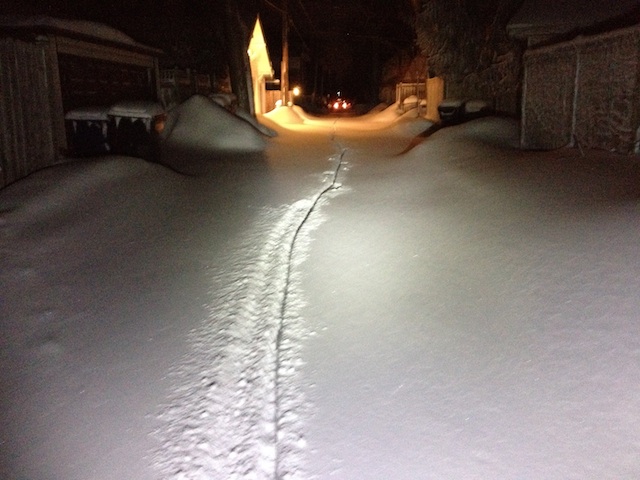
On the subject of making fresh tracks, 1-4 inches of new snow provide some of the best winter riding conditions. The worst conditions are found in snow that has been trampled by cars and snowplows—especially when it gets mixed up with road salt and turns into a horrible slurry of granulated "grey snow." If you really want to make fresh tracks, you need to get out early. By early, I mean 4:30am or even earlier. It’s basically going to be a race between you, the snowplows, and early morning commuters.
February 26, 2014. Wilmette. 5:52am
Roadside astronomy is better in the cold. Here is a waning crescent moon and Venus over the Baha’i temple at a crispy 0F. Barely visible near the trees over to the left—Mercury (use the star-chart overlay to get an idea). The view was far more humbling than my phone camera can convey.
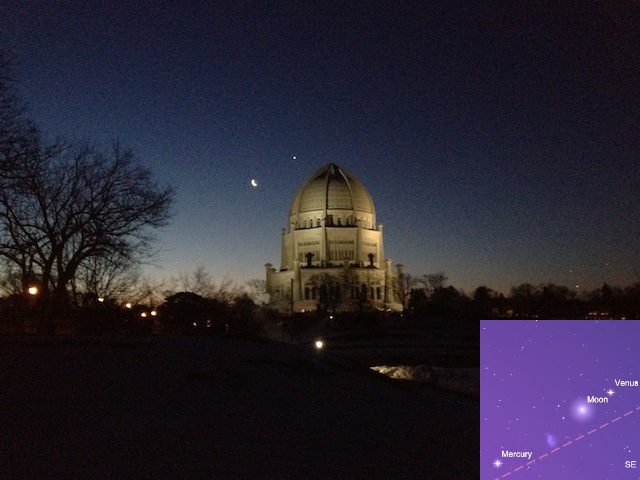
March 5, 2014. Wilmette. 5:35am
You are not the only insane person. There is one other.

This ride was actually started at 4:36am (see my earlier note about making fresh tracks).
Wildlife - Green Bay Trail, Lake Forest
I don’t have a photo for April, but early morning riding is a great way to see a lot of wildlife—often closer to the city than you might expect. Common sightings include deer, skunks, raccoons, and rabbits. If you’re lucky, you might cross paths with a lone coyote wandering the bike trail (which I have encountered at a distance less than 10ft away). I once encountered a red fox. The most dangerous creature might be red-winged blackbirds though. I had one swoop down and attack my head just out of the blue—wear a helmet. This photo is from July, but I saw wildlife year-round.

May 25, 2014. Waukegan. 4:37am
Road biking season is in full force now. Here’s more great roadside astronomy with a view of the moon and Venus over a temple of the industrial world. Just don’t ask how I managed to be in Waukegan at this hour or where in Wisconsin I might have been going. The important point is that I managed to make it back home just as the kids were waking up for the day.
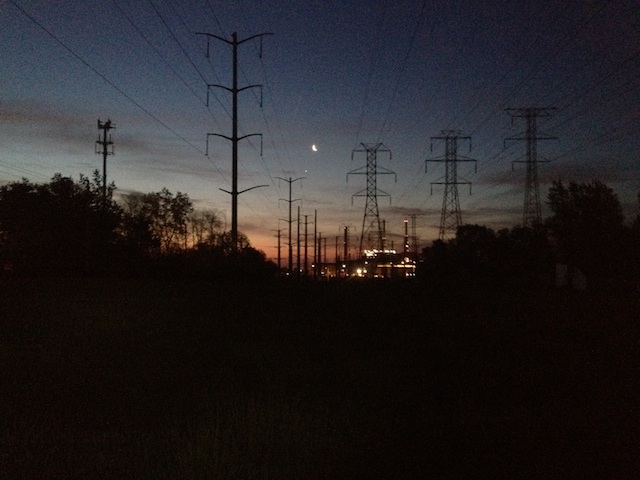
July 26, 2014. Illinois Beach State Park. 5:55am
If you leave the house at 3:40am and crank it straight north for 32mi, you might make it in time to catch a great sunrise here. The whole end of July and early August presented amazing sunrises almost everyday. Give a sly wink to all of the other cyclists you encounter on the way back as you think about the amazing view that they just missed.
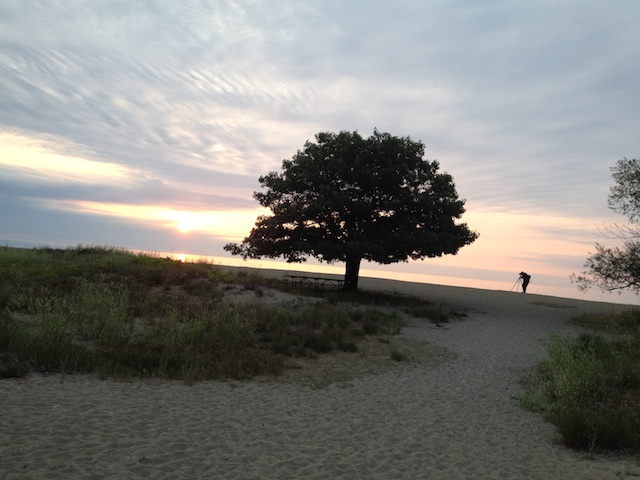
August 20, 2014. Ganges Township, Michigan. 5:30am
I realize that this is not near Chicago, but why would you not bike on vacation? Early morning biking on dark rural farmroads is far more intense than anything near the city. However, you can get some really amazing views in the early dawn light.
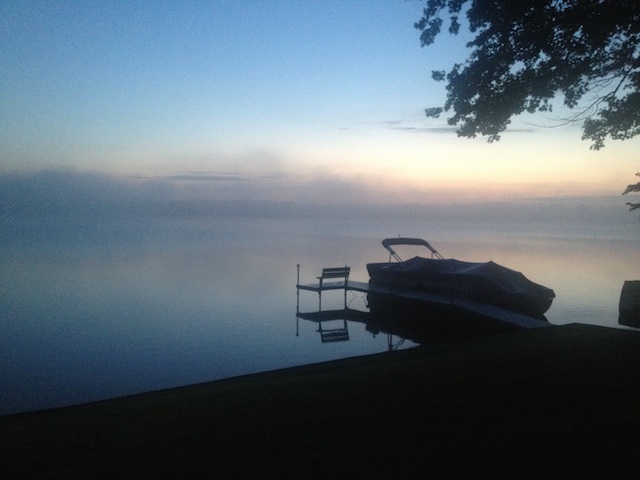
September 25, 2014. Winnetka. 6:35am
One word: WOW!
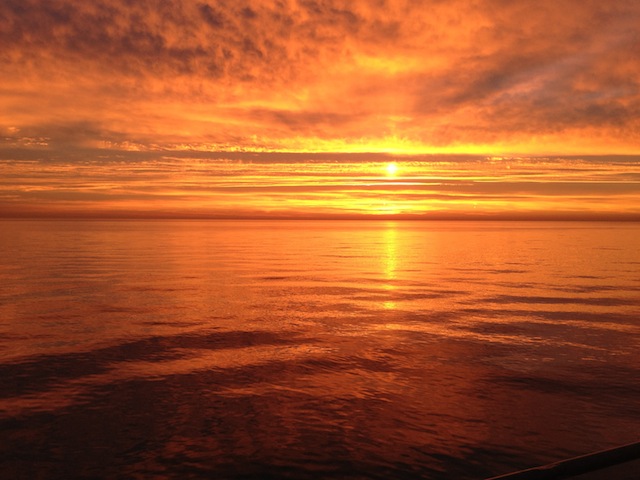
October 12, 2014. Fort Sheridan. 6:19am
The spooky glow of October pre-dawn light, the sound of rustling leaves, and solitary bike riding is best experienced in person. It’s even better when elusive Mercury can be seen hanging low over the eastern horizon in similar conditions (something that arrived again a few weeks later). The roads are starting to empty. Bikes are being put away for the season.
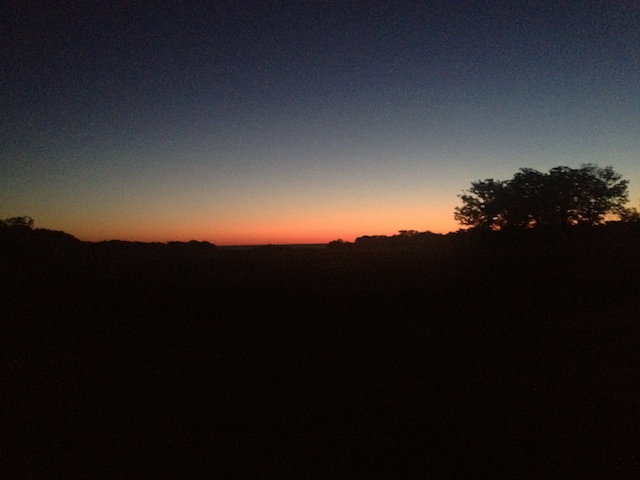
Thoughts on solitary riding: An early morning solo ride is really one of the most amazing things in the world. If you really want to do it right, Sunday morning is the day to do it. Although this picture was taken at 6:19am, I’m actually on my way back home from a ride that started at 4:20am. A ride that took me by the quiet calm of the Skokie Lagoons and up the haunting desolation of the Skokie Valley bike trail. If you’re lucky, you can make it up to the Great Lakes Naval Base to hear Reveille echo across the dark erie skies before turning towards home. You might not encounter another cyclist until you’re almost back—little do they know where you’ve been.
November 16, 2014. Green Bay Trail. Glencoe. 6:23am
Fresh tracks in the first snowfall of the 2014-15 winter. Not shown: the big smile on my face.
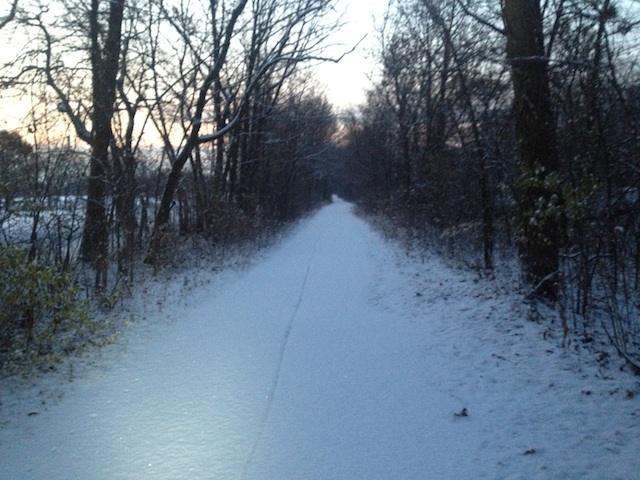
December 31, 2014. Wilmette. 6:31am
A nice end to a month of heavy cloud cover and a great year of biking. Happy New Year!
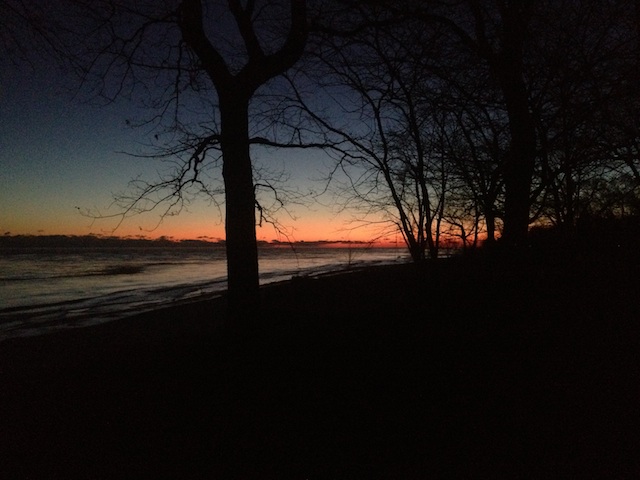
Postscript: A Few Final Thoughts
My 2014 season ended with about 295 days of biking outside in every month of the year—typically about 24-25 days each month. Approximately 100 days were subfreezing and 15 days were below 0F. That might sound kind of harsh (and it was), but I also kept a weather log over the winter. According to that, the average biking temperature was actually closer to 21F. So, that’s something to consider. It’s often not as bad as you might think.
Despite my best efforts to go outside, I still spent about 10 days riding inside on rollers. Sometimes going out just wasn’t in the cards due to road conditions or personal health. Yet, getting a bit of exercise inside was still better than none at all. So, that was fine.
I’d also like to note that although I rode all year, I am not a bike commuter. Year-round commuting has its own set of challenges involving city traffic and other matters. For that, you might check out a forum such as The Chain Link.
On a deeper note, and this might sound kind of corny, but after going the whole year, I’ve never felt more deeply connected to my natural surroundings. Even near the city, there is a rhythm to life, to nature, to the weather, and to the stars. Going out on the bike is one way to connect with that. It’s a really great way to start each day.
So on that note, I hope you enjoyed this. Go out there and ride!
Edit History
-
January 3, 2015. Added a bit about injury risk and using rollers in unrideable conditions. In addition, a section about riding in summer thunderstorms. Finally, when to buy winter gear and a few other minor edits.



